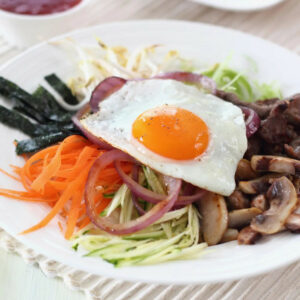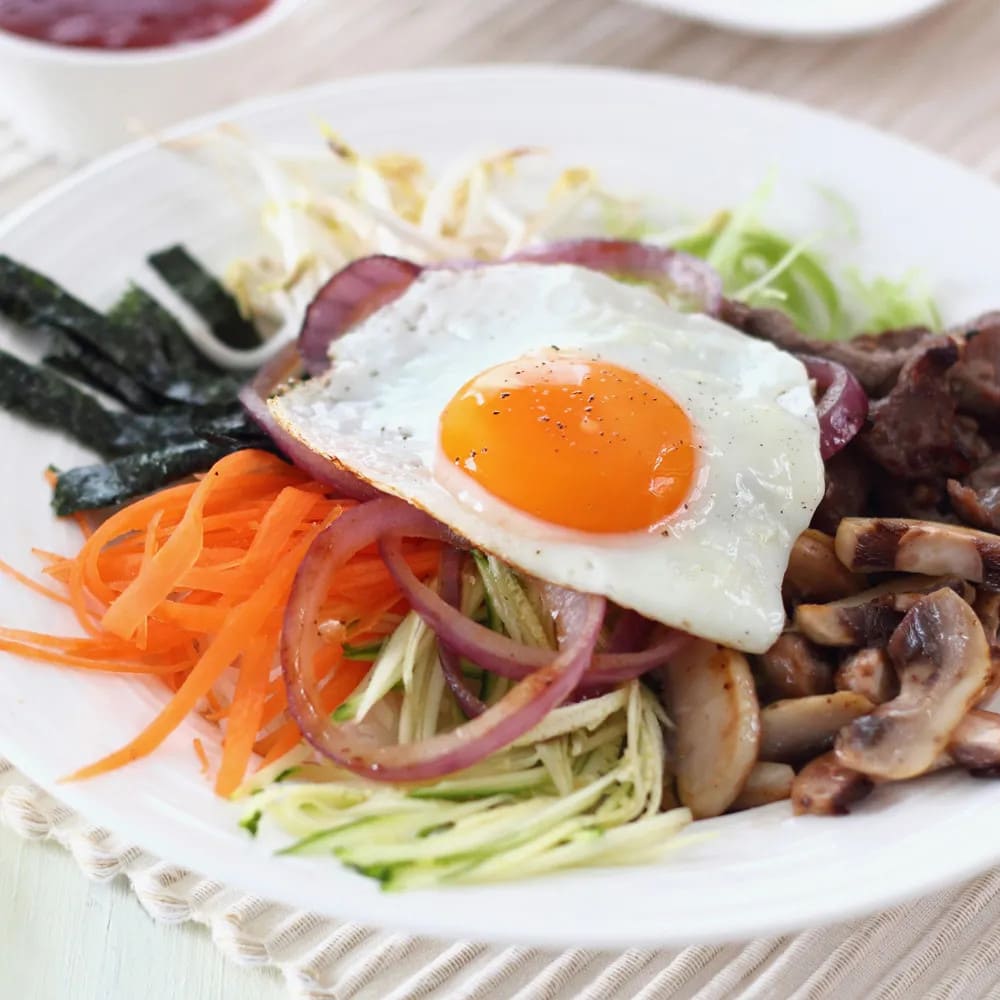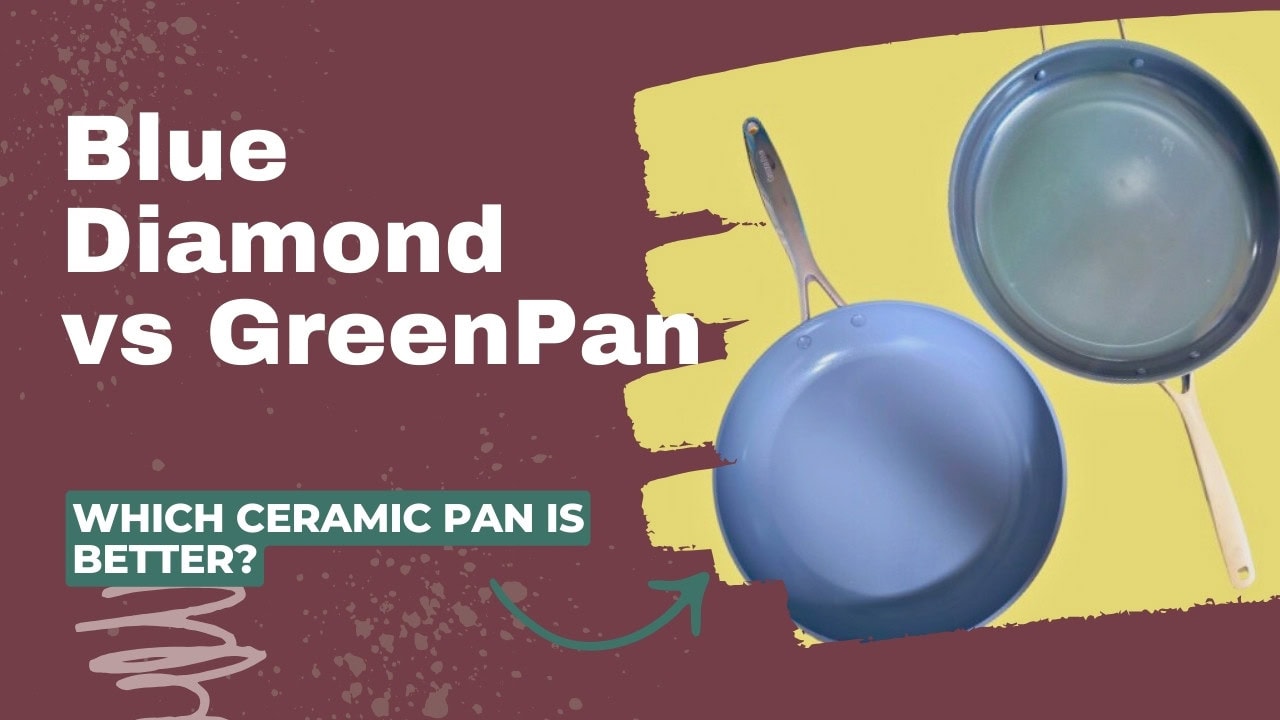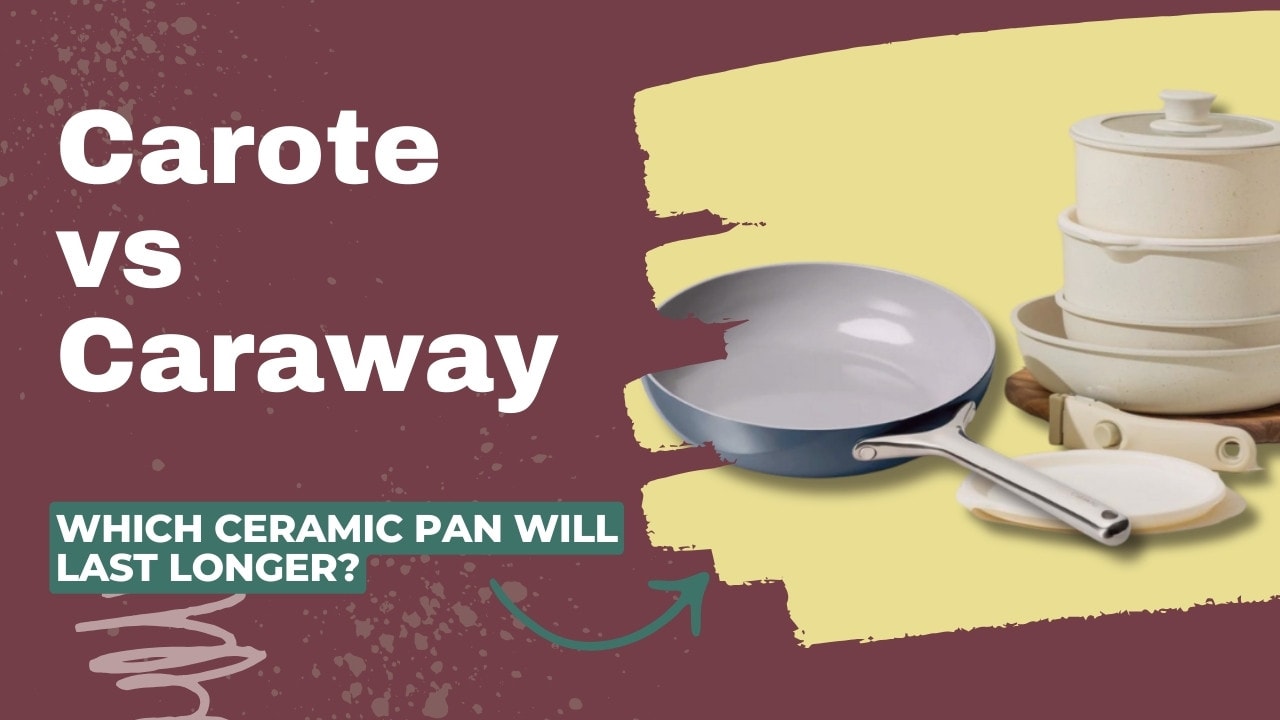Bibimbap (Bibim = mixed; Bap = rice) is traditionally served in a bowl (individual size servings), where a bed of hot steamed rice is topped with julienned, sauteed (or steamed, or boiled) vegetables of different colors. Optionally, beef or pork (or even chicken or sea food) may be added. An egg is often used fried (sunny side up), or made into omelette strips, or even raw, to top off the dish. Bibimbap is a colorful, eye-pleasing dish where vegetables are carefully arranged in a circle, in a way that colours form a harmonic balance.
This was a completely new experience for me and it was good to try it. What I loved about it, was the sheer healthiness of all those vegetables, along with the rice and proteins. You don’t have to have the meat or eggs of course; you could substitute tofu or whatever else floats your boat. Traditionally, this dish is cooked and served in a stone pot, but bearing in mind few readers would have one (I certainly don’t), you can make it in a cast iron or even non-stick skillet (fry-pan) and I’ve edited the recipe to suit. There are a lot of components to this dish, and the instructions can be a little confusing, so the best way to see how it’s made, is to watch this video.
You’ll notice my image shows the dish arranged on a serving plate – that’s simply because my large fry-pan was being borrowed by a friend and I didn’t have anything to cook the dish in at the time, so I arranged it all prettily on a white plate purely for photographic purposes! Later that night, I got to cook it properly and I have to say I enjoyed it immensely!

BIBIMBAP
Ingredients
- 2 cups cooked short-grain rice
Red pepper sauce:
- 3 tbsp Korean red pepper paste (gochujang)
- 1/2 tsp soy sauce
- 1/2 tsp vinegar
- 1 tsp sugar
- 1 tsp sesame oil
- 1 tsp sesame seeds
- 1 clove garlic, minced
Meat: (Omit for vegetarian version)
- 1/2 cup beef, pork or chicken; ground (minced) or cut into fine strips
- 1 tsp soy sauce
- 1 tsp sugar
- 1 tsp vinegar
- 1 tsp sesame oil
- 2 cloves garlic
- 1 pinch of salt and pepper
Vegetables:
- 1/2 cup each of about 6-8 different vegetables (e.g. onions, carrots, zucchini, fresh mushrooms, capsicums)
- peppers, spinach, mung bean sprouts, and green onions (colourful veges adds impact to the dish).
Assembly:
- Sesame oil
- 1 egg for the whole dish or 1 for each serving (optional)
Instructions
- For the sauce: Combine all ingredients and set aside. This sauce is served separately, according to each one’s taste. If you don’t like spicy food, you can omit this sauce and use soy sauce or fermented soy bean paste (miso) instead.
- For the meat: Mix all the marinade ingredients with the meat and set aside while you prepare the vegetables. After the vegetables are prepared and sauteed, saute the meat over high heat until it is cooked through. Put aside.
- For the vegetables: Julienne or slice the vegetables. Other than vegetables like lettuce or cucumber, sauté the julienned vegetables very briefly (they should remain crunchy), one at a time, in a pan that has been lightly greased with sesame oil, over medium high heat (you can, of course, keep them raw if you prefer). Add a pinch of salt. Set aside separately. Cut the seaweed into thin strips using kitchen scissors and set aside also.
- To assemble: Just before serving, fry the egg (if using), or make an omelette and slice into strips. You can even serve a raw egg yolk if you prefer.
- Brush some sesame oil in a large cast iron skillet (fry-pan). Heat the pan on the stove top over medium heat without a lid.
- Over top, lay out the rice – it should start to sizzle. Arrange the prepared vegetables and the meat, side by side, over top. Finally, place the fried egg (or raw egg yolk) or omelette strips on top (otherwise, you can add individual eggs on top of each person’s plate once you’ve dished them out). Drizzle some sauce over top.
- Cook for about 5-10 minutes, depending on your stove. Keep a close eye on it, as you want the rice at the bottom to form a thin, crunchy layer, but you don’t want it to burn.
- When it’s ready, pierce the egg yolk (if using) and stir it through the dish, combining the ingredients, then serve on to individual plates with extra sauce on the side.
Notes
Bibimbap is best made fresh. It isn’t suitable for freezing. Rice and vegetables can be prepared ahead (maximum of 24 hours) and kept in the refrigerator in airtight containers, but will have to be reheated before assembly.










Serving on a plate is absolutely ok! By the way, your dish looks gorgeous and delicious! Thanks for joining in! I’m really happy you enjoyed it!
Thanks Renata and thanks for the great challenge!
I didn’t know about your challenge until now. I also recently posted a recipe for dolsot bibimbap. http://petitworldcitizen.com/2014/07/07/dolsot-bibimbap/. It’s such a tasty, easy and versatile dish!
And yours looks a whole lot better than mine to boot!
Not at all! I think the variety of colorful vegetables and textures used are what makes bibimbap so lovely and special and you nailed it! Bravo! 🙂
Hi! I recently wrote a post about bibimbap. http://petitworldcitizen.com/2014/07/07/dolsot-bibimbap/. It’s one of my favorite Korean dishes! Yum!
I do love Korean dishes and this bibimbap looks so perfect! Thanks for posting and more Korean dishes soon.
Thanks Sam and yes, I must try out some more Asian inspired dishes!
It was really a fun and tasty challenge. Your dish looks so delicious.
Thanks! Healthy too!
Your bibimbap looks great. Love your choice of vegetables.
Thanks Varada! Normally I’m not a huge vege fan, but I loved eating them this way.